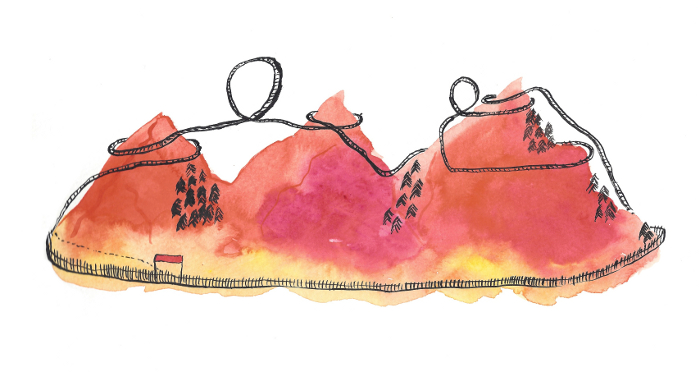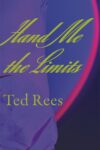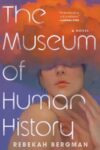“No big deal. Death always comes with the territory. I’ll see you in Disneyland.”
– Richard Ramirez
A few summers ago, I made a semi-legal visit to the defunct Lake Chippewa Amusement Park in Medina, Ohio. This trip was nostalgic because I spent a chunk of my formative years near another abandoned amusement park, the Enchanted Forest outside of Baltimore, which was used as a shooting location in John Waters’ Cry Baby. The shuttered Enchanted Forest served as an outlet for nearly every form of outdoor indiscretion (graffiti, love making, needle drugs, the works). It lived in the woods behind a decaying shopping center and could only be accessed under the cover of night, which made the towering papercrete figures, torn from the pages of Grimm’s Fairy Tales and nestled in the undergrowth, all the more haunted. Nothing shakes the branch of mortality like an abandoned amusement park.
Shadowed by its regional rival, Cedar Point, the Lake Chippewa Amusement Park made a name for itself with the world’s first modern rollercoaster, the Big Dipper. The park was a pastoral getaway for wealthy Cleveland holidaymakers and a rare treat for farmers and laborers in the local beekeeping equipment industry between 1878 and 1978.
Its golden age coincided with the robber baron era and like all amusement parks, Lake Chippewa offered a distorted reflection of its time. Like other industrialists, the owners fastidiously planned every detail of how people would engage with the park, mirroring late19th century urban architects’ rapid development of city parks and skyscrapers, both practical and majestic. The birth of American Urban Planning. Wait times for rides were estimated, and based on careful calculations, space was divvied up with the utmost intention. The location of every funnel cake stand, every steel rivet ensured the smooth flow of crowds, gave meticulous order to the processes of exchange.
Amusement parks are a kind of microcosmic nexus of past, present and future events – scaled down models that express and parody the patterns underpinning civilization in a given moment. The blueprint of Lake Chippewa was demonstrative of the notion that public space is necessary for the modernist city. In this notion, wrapped in the design choices made for Lake Chippewah – large public areas connected by wide paths – we see the roots of George-Eugene Haussmann’s renovation of Paris under Napoleon III. Its arcades and park spaces were introduced to the United States at the 1893 Chicago World’s Fair, the construction of which employed Walt Disney’s father and which ultimately influenced the creation of America’s first modern amusement parks.
An idea born in 19th century Paris in the wake of the crippling 1832 cholera outbreak, Lake Chippewa subverted what it simulated: the America just beyond the parking lot. It was the well-oiled overseer of the super-ego, a display of industrial grandeur, but a worker’s playtime where the boss works for you.
Just as amusement parks are contextualized by both the zeitgeist and obscure historical fragments, they are also involved in a much darker, underlying process. They are haunted by the specter of death. The suggestion of death is part of what draws people to the rides, and like the parks themselves, the form of death that the rides present is inseparable from the parks’ cultural moment. In traditional amusement parks like Lake Chippewa, the death is literal, fondling the Freudian. The rollercoaster rider enters into a tacit agreement with the machine that they could be killed, but most likely will simply flirt with the sensation of nearly plummeting to their horrible (likely pointless) deaths. Anyone who has ridden a serious coaster will tell you that no previous knowledge of the track’s twists and turns can truly preclude the physical response to danger and imminent death. Each rider’s consent is an indicator of l’appel du vide.
The Lake Chippewa Park drew untold thousands of visitors seeking a brief taste of their own mortality. Born under the unwavering pulse of industrial America, these rides relieved their passengers of the burdensome American Dream. A ticket stub promised to briefly satisfy the warm drive back toward the cold embrace of the inorganic. To ride the Big Dipper was to take part in a collective volley against alienation. It served as a kind pressure release valve – a modernist iteration of a Shakespearean carnival tailored to the anxieties of the late 19th century. A ride dependent upon a capitalistic, if not fascistic, faith in the machine.
But the ride is over. The death of Lake Chippewa Park announced the birth of a post-industrial America and with it, new forms of anxiety. Today, Lake Chippewa Park is held tightly within the grasp of nature. Tucked deep into the woods, a density of vines and trees have almost fully reclaimed the three wooden rollercoasters, a Ferris wheel, and one of the last remaining Tumble Bugs – a children’s ride designed to hurtle large circular vehicles about a giant track in the form of an infinity symbol. Nature now beckons the Big Dipper toward the soil. Hades yanks at Persephone’s heels. Over the next century, the Big Dipper will rot and be buried, and from its wooden bones will sprout a thousand saplings. It died a cinematic death, to say the least, rotting away like an old film print of some beautiful world. The future belongs to the sod.
* * *
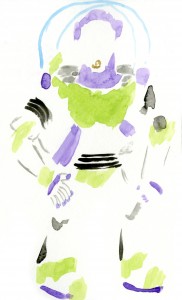 1,000 miles and a century away in the Magic Kingdom’s Tomorrowland, a new kind of symbolic death has emerged at Buzz Lightyear’s Space Ranger Spin. On this modern dark ride, passengers join Toy Story‘s Star Command space ranger fleet, which is of course, meta-fictional to begin with. In the “Toy Story” world, the Buzz Lightyear character is but a toy who believes he’s actually the heroic space warrior he simulates.
1,000 miles and a century away in the Magic Kingdom’s Tomorrowland, a new kind of symbolic death has emerged at Buzz Lightyear’s Space Ranger Spin. On this modern dark ride, passengers join Toy Story‘s Star Command space ranger fleet, which is of course, meta-fictional to begin with. In the “Toy Story” world, the Buzz Lightyear character is but a toy who believes he’s actually the heroic space warrior he simulates.
The Star Command space rangers travel via coaster car through a long tunnel that doubles as a videogame screen. The cars are equipped with laser guns, which the space rangers fire at the armies of the Evil Emperor Zurg. An LCD screen, built into the front of the cars, tracks each space rangers’ number of kills. The LCD screen can only display a maximum of 999,999 kills. If a space ranger achieves more than 999,999 kills, the only way they can determine their final score is by taking a picture of the screen and emailing it to Disney HQ. Some kind of a comment upon the meaninglessness of a dead Zurgian.
There’s never a reference to actual death on the ride. When hit, the Zurg warrior shows surprise and then just kind of dissolves into a swell of pixels. The dead Zurgian combatants lie on the precipice of an unknowable limbo like the slaughtered Formics in Orson Scott Card’s Ender’s Game. On the subject of the Buzz Lightyear ride’s obvious drone-like qualities, it seems worth mentioning that the Department of Homeland Security created a no fly zone around the Magic Kingdom in 2003. Do with that what you will.
If the abandoned amusement park is our cinematic compost, the Buzz Lightyear ride is additive cinema. To infinity and beyond the screen. Like all rides at Disney, Space Ranger Spin exits through the gift shop, where passengers can view, then purchase a digital photograph of themselves in combat with the forces of Zurg.
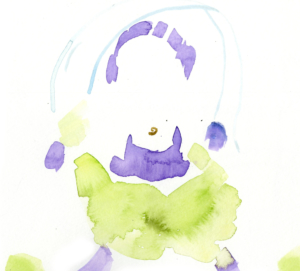 The Buzz Lightyear ride, made of plastic, steel and the digital ether, will likely be nonoperational by the time humanity actually makes it to Tomorrowland, an age when sentient trashcans will rove the world’s cities. Yet, given the inorganic materials with which it was built, the Buzz Lightyear ride will resist the swampy tow of the underworld. To infinity and beyond the beyond.
The Buzz Lightyear ride, made of plastic, steel and the digital ether, will likely be nonoperational by the time humanity actually makes it to Tomorrowland, an age when sentient trashcans will rove the world’s cities. Yet, given the inorganic materials with which it was built, the Buzz Lightyear ride will resist the swampy tow of the underworld. To infinity and beyond the beyond.
In the same way that the Lake Chippewa can be understood as a sort of expression of 19th century urban planning and its rides viewed as small escapes from green light at the end of the dock, the Buzz Lightyear Ride helps map death’s modern position.First, there is the obvious context of Disney World itself, the park that ushered in the second wave of American amusement facilities. The park crystalizes the succession of post-WWII, Robert Moses helmed urban planning reforms, and Walt Disney’s particularly dysfunctional brand of urban utopianism.
While that history informs the whole experience, Buzz Lightyear ride seems very much emblematic of a new kind of ride for what might be considered the third wave of amusement parks. The Buzz Lightyear ride is a transmedia vehicle, influenced by video game culture more than anything else. Whatever it means, the pleasures we derive from it are inextricable from videogames.
What seems most striking about the Buzz Lightyear ride is there is no threat of injury. The ride doesn’t direct death’s expression inward, that is, suicidal, it’s directed outward, yet all this killing is nonfigurative. Abstracted not in the superficial sense that this is a children’s ride and there are no blood and guts, but abstracted in the sense that killing a Zurgian does not elicit any kind of repercussion for the space ranger.
River Donnelly is a writer living in [REDACTED]. His [REDACTED] has been published in [REDACTED] and [REDACTED].
Art by June Tate. June is an illustrator living in New York City, see more of her work here.
This post may contain affiliate links.



